|
Aerostats in 1912: A Look in Scientific American's Archives
[Slide Show]
Images of lighter-than-air technology from a
century ago, two years before World War I broke out in Europe
By Daniel
C. Schlenoff | March
3, 2012
In 1912 airships and balloons, powered and
unpowered, were being developed to explore, to entertain, to
travel, and to wage war. Aerostats (any lighter-than-air craft)
remained highly sensitive to weather and
many were floated by flammable hydrogen (at least until the
destruction of the Hindenburg in May 1937) but despite the
limitations, great hopes were placed on these frail craft.
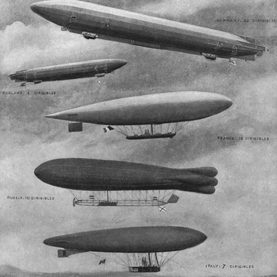
Image: Scientific
American,
Dec 28, 1912
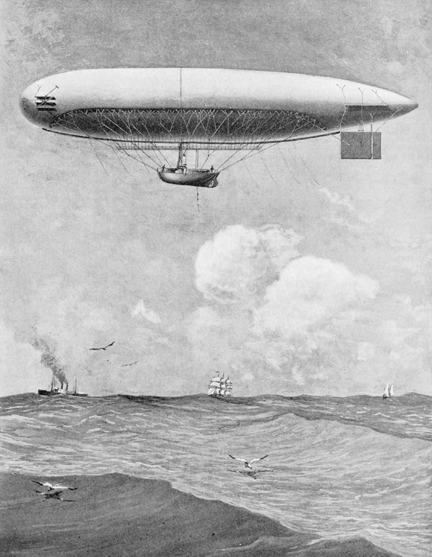
CROSSING THE ATLANTIC: Airship Suchard was
redesigned and rebuilt three times by Joseph Brucker i
n Germany.
It was supposed to go from East to West with the trade winds but
the attempt was never made.
[Link
to this slide]
Scientific American,
March 16, 1912

FUN WITH BALLOONS: Two
aeronauts (with much sartorial aplomb—at least one of them
sports a bow tie) artfully meld the science of self-photography
with the latest in balloon development, at an altitude of 2,000
feet over Bordeaux, France.
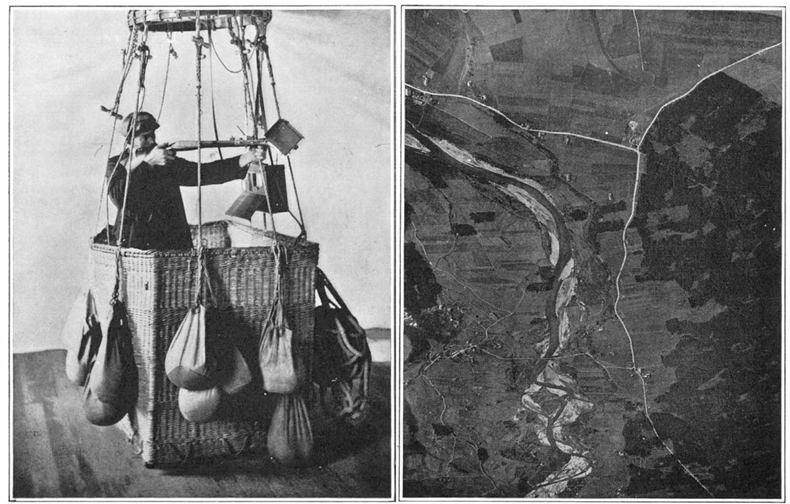
BALLOON AS WEAPON: The
“photogrammetric gun” used a camera to create a map “with
sufficient accuracy for military purposes.” In World War I,
balloons were widely used for observation and artillery spotting
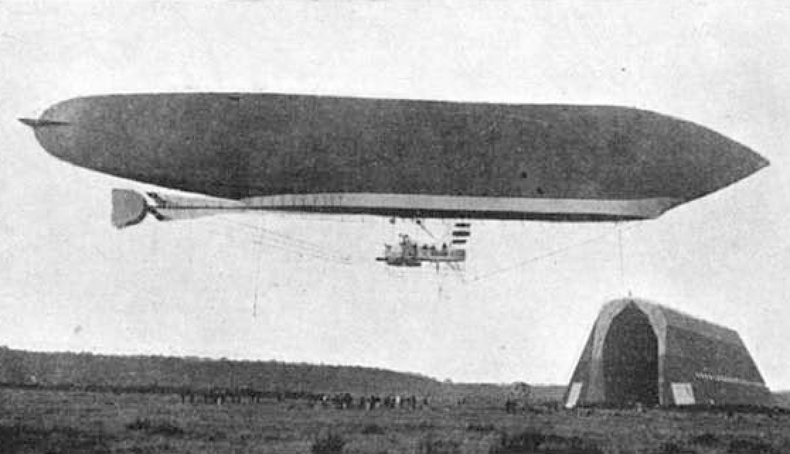
FRENCH DIRIGIBLE: The Lieutenant
Selle de Beauchamp was
supposed to be the French military response to the increasing
capabilities of the German Zeppelins.
[Link
to this slide]
Scientific American,
January 27, 1912

BEAUCHAMP GONDOLA: The
huge propellers of the French military airship Lieutenant
Selle de Beauchamp were
driven by two motors of only 80 horsepower each.
[Link
to this slide]
Scientific American,
January 27, 1912
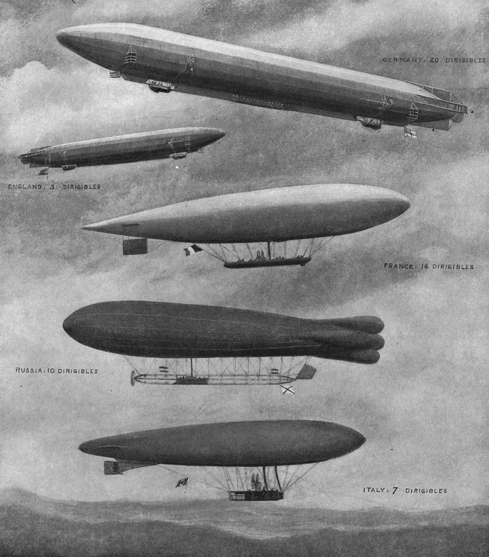
MILITARY
AIRSHIPS:"A struggle has begun on the European continent for the
military control of the air." The sizes show the relative
airship strength of countries that would become combatants when
World War I broke out in Europe in 1914
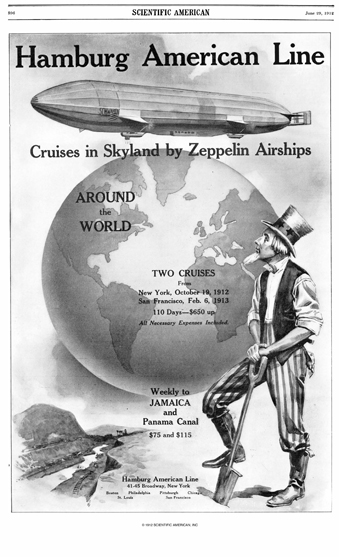
TOURISM BY AIRSHIP: This
advertisement starring the Zeppelin airship Schwaben tried to
sell (but never delivered) a 110-day cruise for $650 ($15,000 in
today’s money)
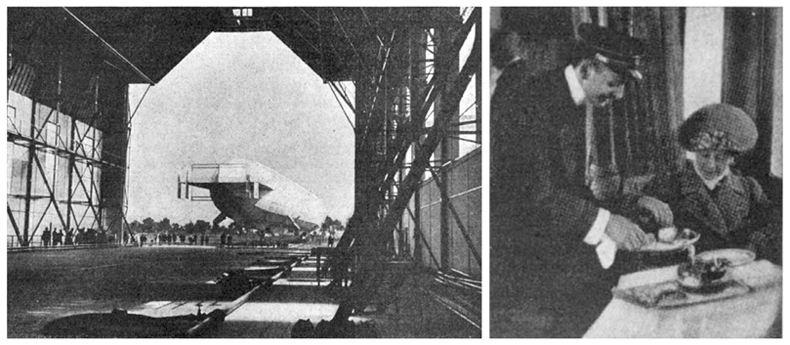
TRAVEL BY ZEPPELIN: An
airship is pulled from the hanger in Frankfurt by a ground crew.
The very civilized trip to Duesseldorf included a cold repast
served by the steward
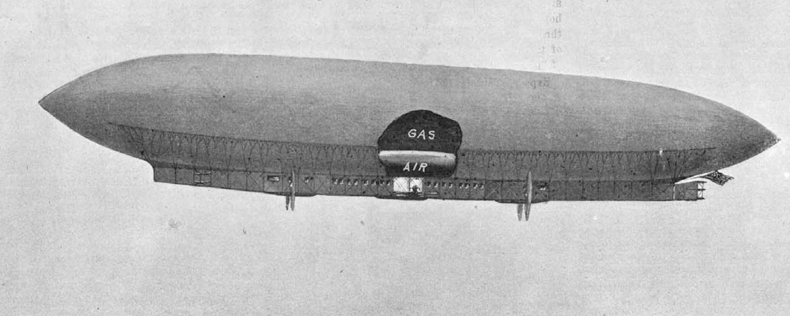
SAFER DIRIGIBLE: Designed
by Melvin Vaniman but never built. A bag of Goodyear rubber was
to be held at a constant volume within in an immensely strong
envelope of cotton reinforced with steel piano wire.
[Link
to this slide]
Scientific American,
February 17, 1912
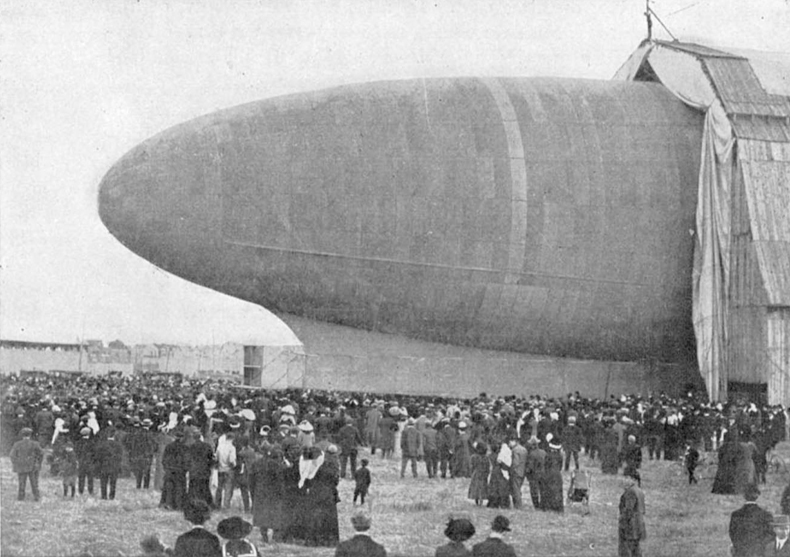
ILL-FATED AKRON: Emerging
from its hangar is “America’s only airship.” Designed by Melvin
Vaniman, lift was provided by hydrogen, propulsion by gasoline
engine
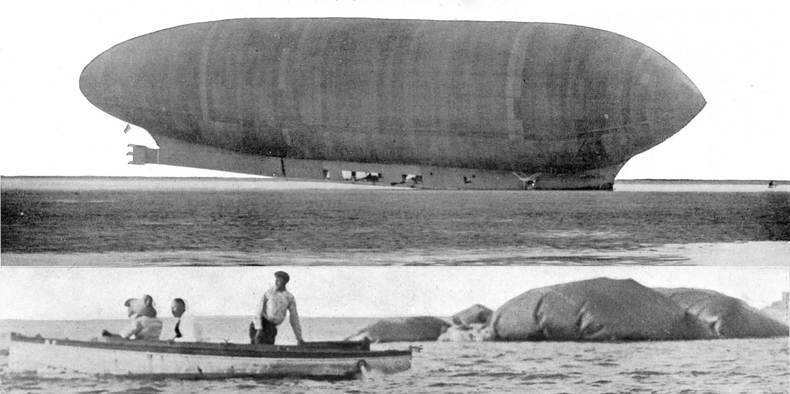
AKRON IN
FLIGHT AND WRECKED: The
airship maneuvering close to the water during a test flight.
Later, the hydrogen-filled vessel exploded just off the New
Jersey shore, in front of thousands of horrified spectators.
Source: Scientific
American
1 2 3 4 5 6 7 8 9 10 Newest
articles
|












